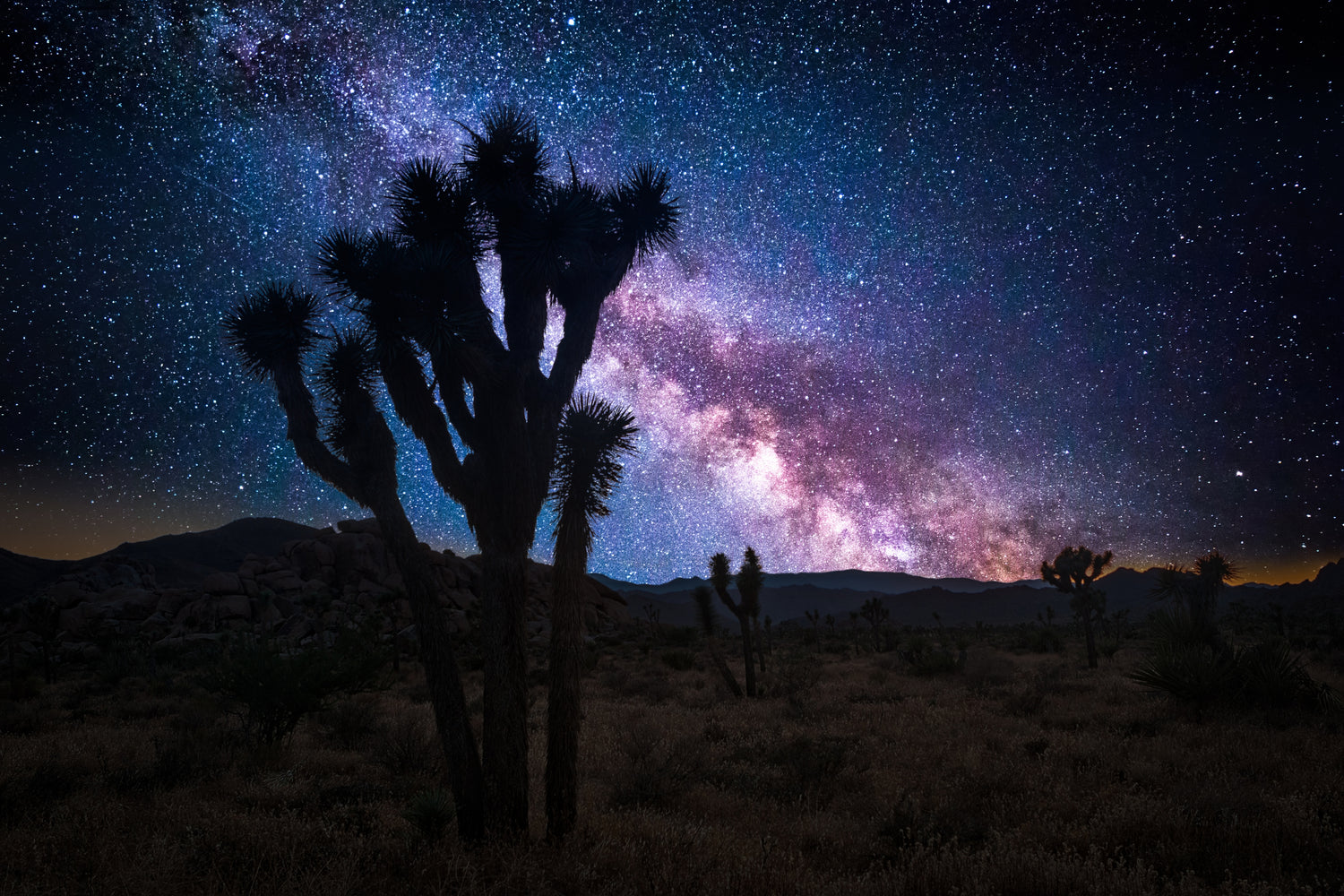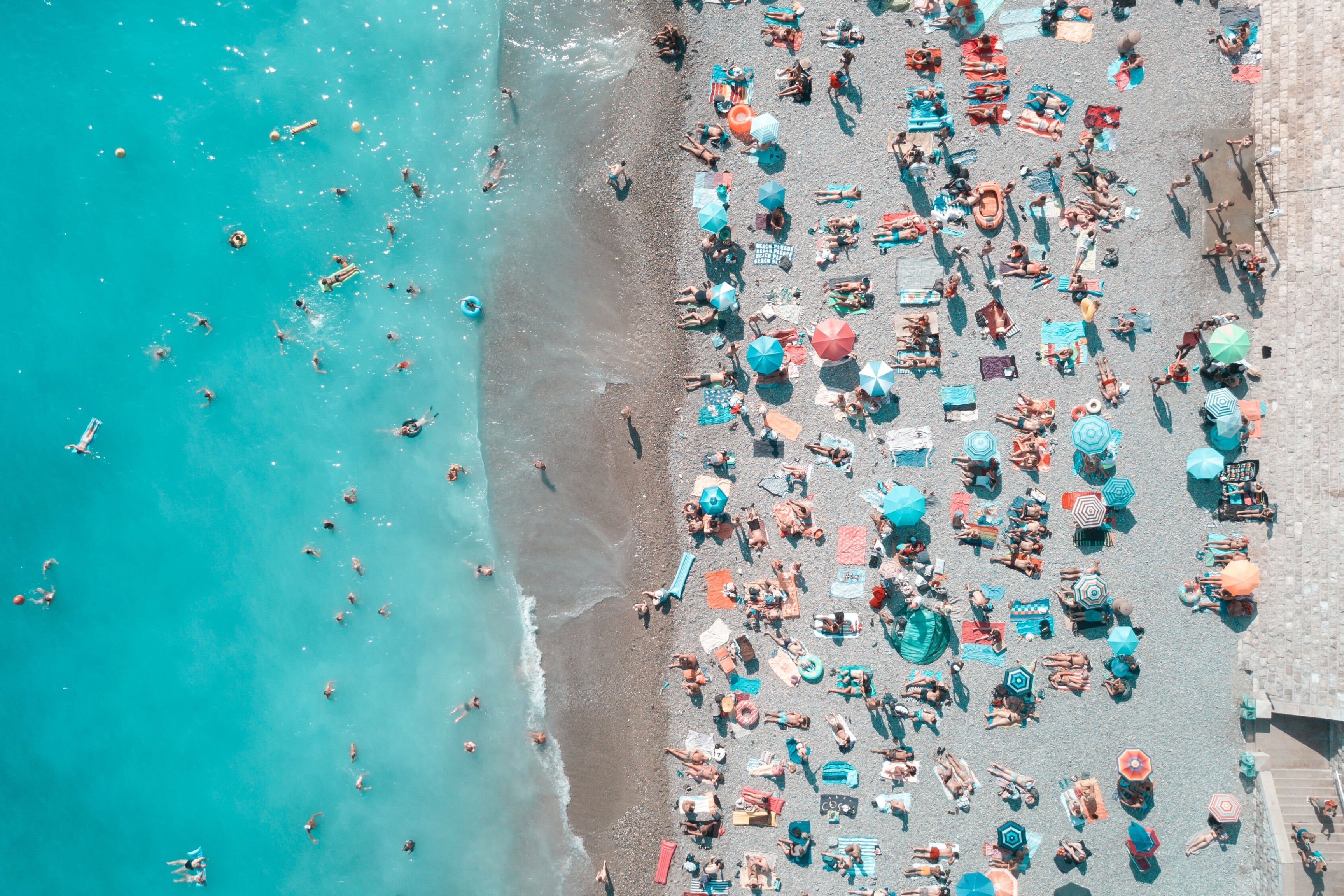Whether you're a first-time stargazer or a seasoned astronomer, you'll want to add Joshua Tree stargazing to your bucket list! Take in the spectacular views of the Milky Way over this very special desert wilderness. With little light pollution and plenty of clear night skies, the Joshua Tree stars always put on a memorable show.
But how do you plan a stargazing in Joshua Tree adventure? Aside from choosing when to go and where to watch, here's a quick checklist to make sure you have everything you need:
- A winter parka or warm clothes + outdoor blanket
- Snacks + cold and hot beverages
- Your choice of optics (binoculars, telescope, or "stellarscope")
- A reclining chair, blanket, or sleeping bag
- A red flashlight (to enhance your night vision)
- Tripod and extra batteries for your camera
- Constellations map or "star chart"
- Smartphone Apps (for an interactive experience)
- Optional: A stargazing tent (these have mesh openings for optimal viewing)
When To Go:
It's best to go stargazing in Joshua Tree during the winter months when daylight is short and the night sky begins early. The new moon phase usually has the least amount of light pollution, so plan your desert stay on the days before, during, and right after a new moon. If you go during a full moon, you may still be able to observe some stars, but the moon's brightness will wash out the light from most of the fainter stars in the galaxy.
Not sure when the new moon kicks in? Check out this moon phase calculator and look for the darkest squares on the calendar.
Where To Go:
Joshua Tree National Park is a certified "Dark Sky Park" by international standards. This means the park has some of the darkest skies you can find anywhere in the world, with the best viewing conditions at the higher elevations in the park.
While there are many spots to choose from, the National Parks website recommends Cottonwood Campground or Black Rock Canyon as the best places to view the Joshua Tree stars. Both campsites provide convenient access to nearby trash receptacles and restrooms. They tend to book up quickly, though, so be sure to make your reservation online far in advance. Rates start at around $25 per night.
We'd also suggest staying at an off-road campsite or BnB in the backcountry of Joshua Tree, as these lesser-known spots tend to be less crowded. By doing this, you can minimize the chance of other stargazers disrupting your night sky experience with their bright flashlights!
What To Bring:
Now that we've listed the essential Joshua Tree stargazing items, let's briefly go over why they're so important.
A winter parka or warm clothes: Night temperatures at Joshua Tree average in the 30- to 40-degree range (Fahrenheit), with even chillier nights in the winter months. So be sure to bundle up and bring extra layers, as the desert air offers very little insulation from the cold.
Optics: Binoculars will narrow the gap between your depth of vision and the Joshua Tree stars, but a stellarscope will do you one better: it comes with a fully integrated visual map of the sky! To use the stellarscope, set the knobs to your current date and time as you peer through the viewfinder. The stars in the sky will then match up with those on the star map! (How cool is that?)
Red flashlight: No Joshua Tree stargazing trip is complete without a red flashlight. This device maintains dark adaption for nighttime viewing while providing enough illumination to see your surroundings. By contrast, a flashlight scatters white light, which can overpower your view of the stars.
Tripod: Whether you're using a handheld telescope to view Joshua Tree stars or a smartphone to snap pictures, a tripod will help you get a steadier glimpse of the night sky. Not only that, but it can help you easily alternate between different viewing angles and optics.
Star Chart: A star chart is a celestial map of the night sky with astronomical objects laid out on a grid system. By bringing one with you, you can unlock your inner Copernicus and find all 88 constellations in the Milky Way galaxy.
Apps: With technology at our fingertips, there's no need to be an astrophysicist to appreciate the night sky. A few of our favorite stargazing apps are Star Walk 2 and Sky Guide. They offer a wealth of information about the stars, planets, and constellations, plus provide tips on how to best approach astronomical observation.
Now that you're ready to go stargazing in Joshua Tree, don't forget the checklist above, plus the travel essentials that come in handy when you're out in the desert. With the right preparation and a bit of luck, you'll have a magical night under the stars.
Happy stargazing!




